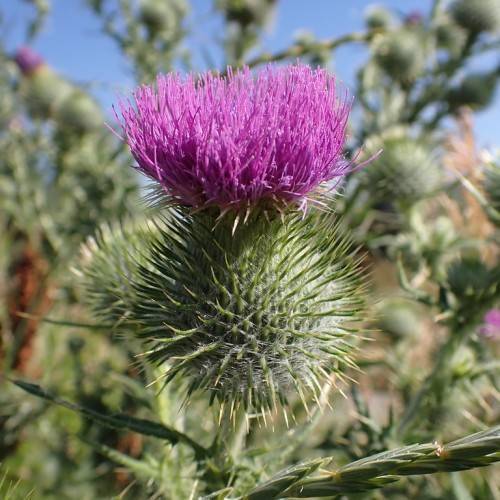
Bull Thistle
Cirsium vulgare
Watering:
Frequent
Hardiness Zone:
Sun:
full sun,part shade
Fruits:
Fruits Ready In
Leaf:
Yes
Growth Rate:
Low
Drought Tolerant:
Yes
Salt Tolerant:
Yes
Thorny:
Yes
Invasive:
Yes
watering
Meadow Thistle (Cirsium scariosum var. scariosum) require an average amount of water. During the spring and summer months, when the plant is in active growth, water it once or twice a week. When the temperatures cool off in the fall and in the winter months, reduce watering to once every 2 to 3 weeks. However, watch for signs of wilting or dry soil, and water whenever these are present. Watering at soil level is recommended, as overhead watering can cause leaf spotting and the spread of fungal diseases.
sunlight
Meadow Thistle (Cirsium scariosum var. scariosum) does best with full sun exposure. It requires at least 6 to 8 hours of direct sunlight every day, ideally during the morning and afternoon for optimal photosynthesis and growth. For optimal health, regular watering and fertilizer application may be necessary depending on the local climate.
pruning
Meadow Thistle should be pruned when it begins to show signs of overcrowding or dieback. As a general rule, prune away any dead or damaged foliage and/or stems. Cutting back damaged or overcrowded stems will help the plant develop a denser and more attractive form. This annual herbaceous plant may also benefit from deadheading the flowers in order to prolong the blooming period. Pruning should be done in the early spring before the plant begins to grow actively or in the summertime after flowering. Pruning should be done sparingly, since it may undermine the hardiness of the plant.
